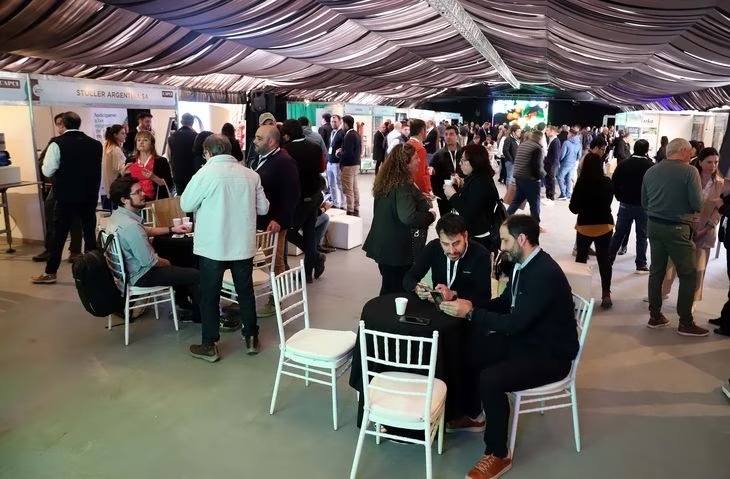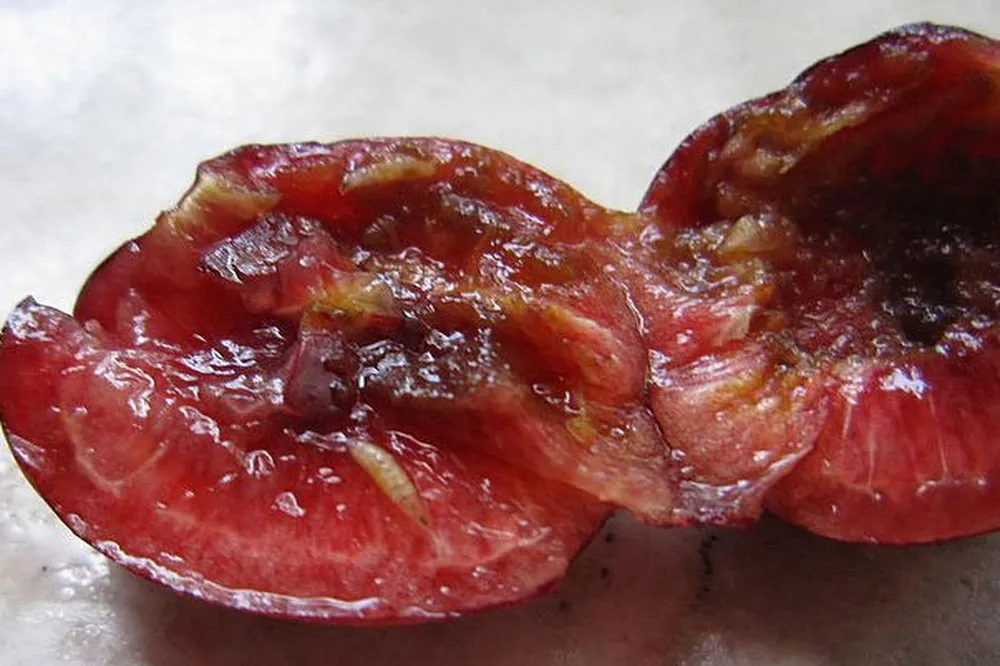As part of the Cherry Day, which took place on August 28 and 29 in Plottier (Neuquén), Chilean specialists demonstrated knowledge and experience related to the global cherry business. The auditorium was so attentive to the keynote lectures that more than once, a group of people could be seen photographing the presentation slides, taking notes, and recording the lessons.
Valeria Lepe Martínez, a Chilean technical consultant, began her presentation with a clarification: "Much has been said about the high levels of productivity in Chile; there is always talk of yield dollars, but these dollars are the consequence of a reality. If we do things wrong, if I do not do things consciously and clearly, these results will not come."
"I believe that this point is very important: the Chilean producer knows that the demands of the last five seasons have changed a lot. What worked five seasons ago no longer exists today. Today, only from XL upwards works." And she added: "It is very dynamic. You need to have a mindset of continuous improvement, what we did last season is probably not enough for this season."
Like Formula 1
"I really like to compare it to Formula 1, and I think it’s perfect for explaining fruit growing. What we do is like a team, and the fact that the driver wins is the super harvest," said Lepe Martinez in her presentation titled ‘In Search of Nutritional Balance in Cherry Trees’.
In this regard, she added: "There is no room for mistakes. A mistake is fatal; at 300 km/h, there is no room for error. I invite everyone to record the numbers of their own production reality." "We need to integrate the things we do as consultants and that in the orchard we all go together with a common vision, the plant is one, we must have a common vision, the various experts," added the Chilean specialist.
Continuous Improvement
As if it were a sort of mantra, the consultant emphasized the importance of being guided by the “logic of monitoring and continuous improvement.” "As for the nutritional aspect, it is important to approach it as a nutrition program. It is not something you do one season and repeat the next. The tree is constructive, the tree is 365 days a year."
"We see that some periods are more relevant than others, but the tree is continuously built. The tree remains, the fruit goes; we must always first prioritize, have the tree with the vigor we want, and then demand the fruit from it."
In this context, she said that “we were proposed the idea that the productive limit does not exist; it depends on the quality of the tree (...). In Chile, the idea is to manage the blocks as productive units, one size does not fit all; the important thing is to design this plan to adapt it to each orchard.”
“Each tree has its own individuality in terms of what it requires in terms of rootstock, variety, production state, and growth it is showing. I invite you to build your nutritional history in nominal terms, hence soil analysis, foliar analysis, or fruit analysis," she said.

An Invitation
“The demands are increasing; we can always raise the bar a little,” she assured an attentive audience. And to conclude, she said: “I would like to invite everyone to analyze their situation and start improving. Nutrition is precisely that; you have to start one day if you are not always waiting and leaving it for the next year like a diet, but you have to do it constantly.”
Attention to Irrigation
Jordi Casas Teixidó, an international technical consultant, emphasized the use of water in his presentation “Challenges for Cherry Cultivation in a Climate Change Scenario.” "The concentration of roots is under the tree, and I have to make sure that the irrigation is as uniform as possible to achieve the best potential," he said to an audience very attentive to his recommendations.
“I have to measure evapotranspiration; it is not about watering. They told us that in the summer, we should irrigate like crazy, well, no, we shouldn't do that. Someone talked about stressing the plants or reducing irrigation so that they enter the winter rest well, yes, but I have to go by what evapotranspiration tells me because if I stress them during that period, I will have more double points or lower quality fruits,” he warned in his technical presentation.
On the afternoon of the first day of Cherry Day, Casas Teixidó asked: "How do we know what the water need is just by looking at the trees, the leaves that have fallen at noon? Yes, it could be, but perhaps the damage is already done."
“I'm sorry if I talk so much about irrigation, but I’ll tell you one thing: in all the orchards where there are more mistakes, it’s in irrigation. For example, in Spain, moisture resistance is due to the fact that they usually over-irrigate at the beginning and under-irrigate in the middle. So, at both extremes, irrigation is done poorly, and that’s where the most problems are. The large community of growers had the concept that as soon as the curve dropped, you had to irrigate, but no. You have to reach a level of oxygenation for the roots to grow.”
To conclude, Casas Teixidó left a sort of maxim with the audience: "We need numbers, information to make decisions."
Orchard Covers
On how to choose “orchard covers,” the analyst said: “We did some research by hand at the University of Concepción, and we realized that there is a huge variety of plastic materials, and they allow us to achieve different results. Some were heating, but we always wanted to cover the cherry tree. Today we have learned that research must discover certain moments.”
“I cover at the time of flowering, and research that is being conducted in Germany ensures that we pay attention to keeping the plastic on for longer because it causes softening. Passing a fruit of good size, but soft, means spending a couple of dollars less per kilo. You have to cover and uncover.
Source: Más Producción
Images: Más Producción
Cherry Times - All rights reserved













